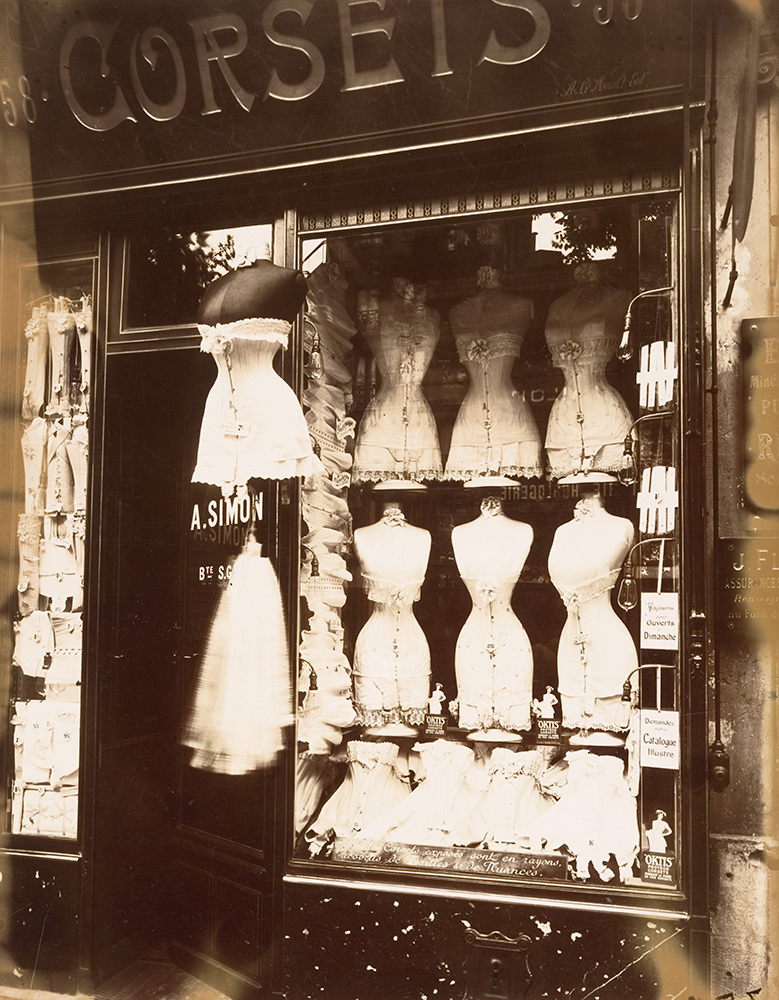Eugène Atget
Eugène Atget. Street Musicians, 1898-99.
Eugène Atget (1857 – 1927). French.
It’s hard to point to a single photographer who has had more influence on modern photography than Eugène Atget. What’s fascinating is that he apparently had no such intention as he exposed his glass-plate negatives over the course of nearly 39 years.
Eugène Atget. Boulevard de Strasbourg, 1912.
Originally an actor, Atget turned to the camera only after an infection of his vocal chords ended his stage career in 1888. From Paris he moved to the provinces, where he made his first photographs in 1888.
In 1890, he returned to Paris and went into business supplying photographs to painters, architects, and stage designers as studies for their work.
Eugène Atget. Le Chateau, 1903.
Meanwhile, the look and feel of Paris was changing dramatically as the urban renewal program of Napoleon III, carried out by Baron Haussman, demolished many of the old neighborhoods and their crowded narrow streets, replacing them with broad boulevards and open squares. Atget was commissioned by the Bibliothèque historique de la ville de Paris in 1906 to document the vanishing old Paris, which led to many of his most famous images.
Eugène Atget. Rue St. Rustique, 1922.
Atget photographed medieval neighborhoods, store fronts, interiors, architectural details, and the people who lived in those tangled lanes and alleys of the city, often rising early to capture the morning light and to avoid the flurry of pedestrians and traffic.
Equally important are his later atmospheric images made at the peripheries of Paris, including the commune of St. Cloud and further out in Versailles. By the end of his life he had created over 10,000 negatives and 25,000 prints.
Eugène Atget. Versailles, The Orangerie Staircase, 1901.
Eventually, in the 1920’s, his extraordinary body of work was seen for its artistic value by the photographer Man Ray and artists such as Picasso and Matisse. In 1925, Man Ray introduced Atget to Berenice Abbott, an American photographer living in Paris, who acquired the archive of negatives and prints remaining in Atget’s studio after his death in 1927.
Abbot was a great promoter of Atget’s work, publishing multiple books of his photographs, which led in turn to world-wide recognition of his artistic achievement. His stature as a crucial contributor to modern photography grew. Later, Abbott sold her archive of his work to the Museum of Modern Art in 1965, which led to the definitive four-volume edition of Atget’s photographs edited by John Szarkowski, the curator of photography at MOMA, and Maria Morris Hamburg.
Berenice Abbott.
The list of photographers who have been strongly influenced by Aget is impossibly long, since his appeal reaches across so many photographic schools of thought. He’s been championed and embraced by everyone from the Surrealists to Walker Evans to contemporary 21st century photographers, and the lyrical vision of his engagement with the real world continues to impact photography today.
Berenice Abbott. Eugène Atget.







